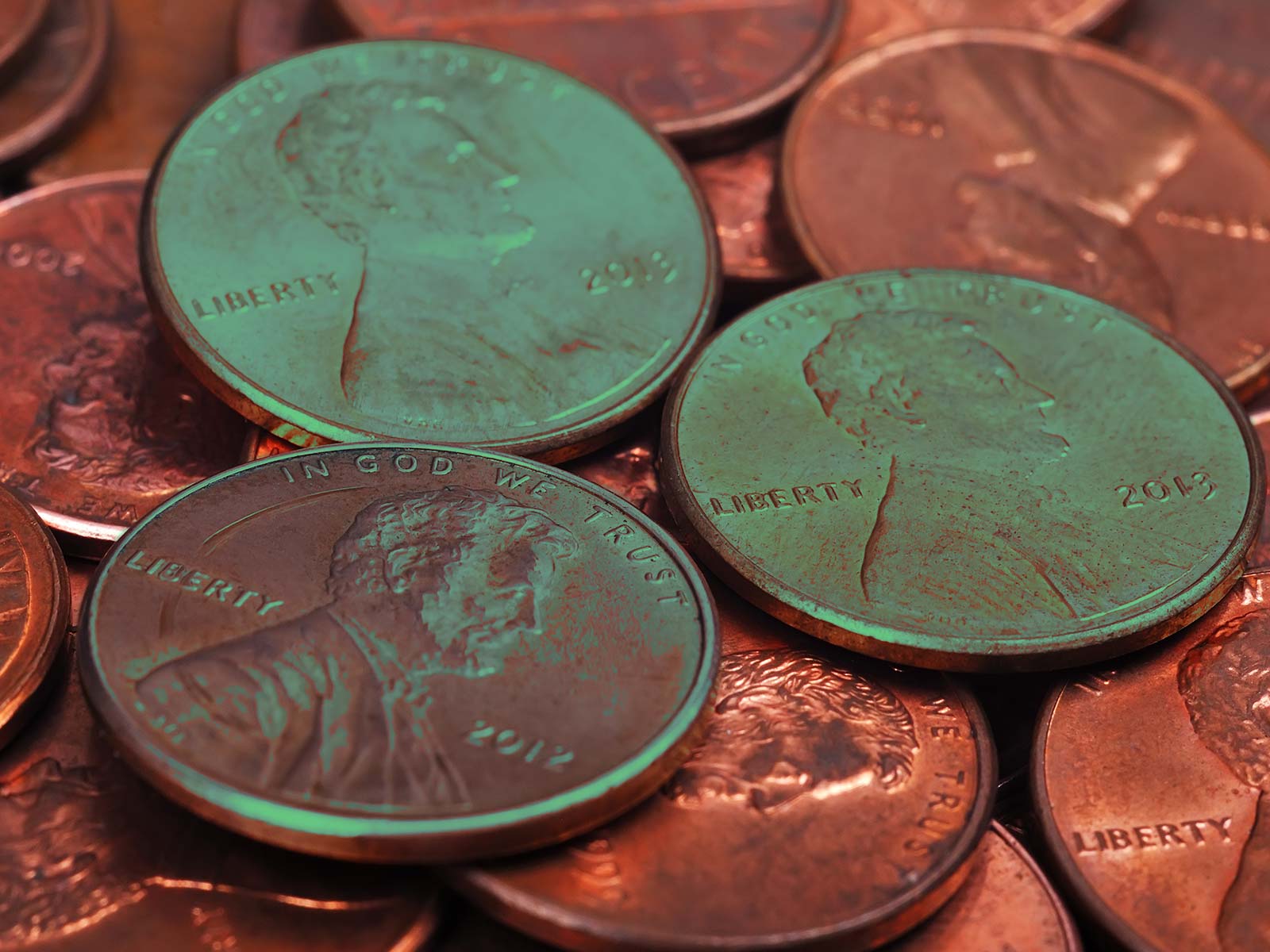Have you ever noticed that new pennies are nice and shiny, while older ones are darker and duller? That’s not just dirt on your money! It’s chemistry in action. Learn how to shine or make a penny green in this fun experiment.

What to get:
- 3 dull, dirty pennies
- ¼ cup (60 mL) white vinegar
- 1 tsp. (5 mL) salt
- Paper towels
- Non-metal bowl
- Plastic container with a lid
What To Do:
First, we’ll shine up those pennies:
- Pour the vinegar into the bowl and stir in the salt until it is dissolved.
- Put the pennies in the bowl and let them sit for a minute or two.
- Remove the pennies and rinse them under running water.
- Place the pennies on the paper towel, let them dry, and admire their shininess.
Really dirty pennies may have to stay longer in the vinegar solution, or may even have to be rinsed and soaked again.
Now let’s get them dirty again in 3 different ways:
- Put a folded paper towel in the bottom of the plastic container, wet it with vinegar, put one penny on the towel and seal the lid.
- Wet a paper towel with a little vinegar, and put one penny on the towel.
- Dip one penny in the salt/vinegar mixture you made and place it on a dry paper towel. Check the pennies after 1 hour, 2 hours, 4 hours, and 8 hours and note the differences.
The Science Behind the Experiment:
When the copper is oxidized by just the oxygen in the air, copper-oxide is created, and the pennies turn dark brown. When you turn a penny green, that means there was some chlorine in the reaction, caused by the salt (sodium chloride). Vinegar is an acid that dissolves copper oxide, but isn’t strong enough to dissolve the copper in the pennies themselves, so when you rinse the pennies, the shiny copper is left. But if you leave the vinegar on the penny, that dissolved copper oxide can react with the oxygen in the air even better. Which penny got darker, the one that was rinsed, the one in pure vinegar, or the one in the vinegar/salt mixture?!
Can you believe this chemical reaction is why the Statue of Liberty is now a greenish-blue color? It’s true! The Statue of Liberty was made with layers of copper, but the oxygen and salt water in the air caused it to change color over time. Acidic rain (due to pollution) also contributed, making the reaction happen faster (like vinegar that was left on the penny!).
Scientists Ask Questions:
- Which penny will get darkest?
- Does it make a difference if the pennies are exposed to the air?
- Does the added salt speed up or slow down the effect?
- What would happen if you let the pennies sit overnight?

